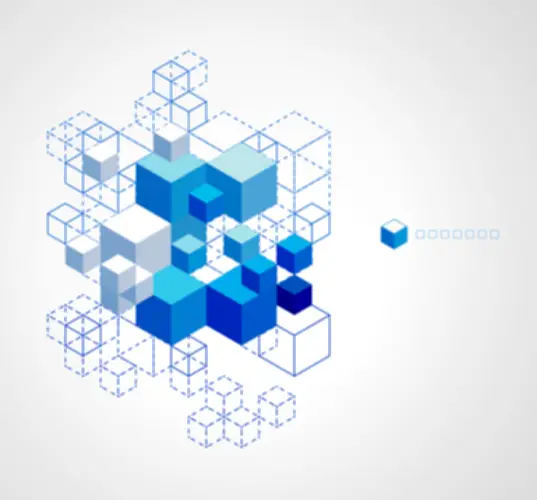Soa Vs Microservices: Whats The Difference?
Service composability is a precept that emphasizes the design of companies to be composed together to form larger, more complex services or methods. This composability allows organizations to create new functionalities by combining existing Mobile App Development providers, quite than constructing every little thing from scratch. It promotes a modular and scalable architecture, the place services may be reused and combined in various ways to satisfy evolving business needs. By breaking down advanced techniques into smaller, modular services, organizations can construct a library of reusable components that could be leveraged throughout multiple functions. This not solely reduces growth effort and time but also improves general system maintainability and reduces the chance of duplication and inconsistencies. One of the primary challenges of microservices structure is the elevated complexity that arises from managing numerous companies and their interactions, significantly in advanced purposes.

What’s The Decision: Soa Vs Microservices?
It establishes policies and greatest practices for service development, deployment, and administration, maintaining service quality and safety. This method soa vs microservices allows efficient service performance monitoring, version control, and dependency administration. By providing a structured surroundings, centralized governance aligns IT initiatives with enterprise objectives, making certain that companies are practical and strategically related to the organization’s goals. Both service-oriented architecture (SOA) and microservices allow development teams to build, deploy, and manage fashionable applications effectively for cloud environments.
That said, one drawback to SOA is that if a element incorporates a flaw or bug, it’ll have an effect on all instances the place it’s applied. As a result, problems inside the code or another component of every module can have widespread effects across the enterprise if they are deployed at scale. To study more about tips on how to build agile functions, download your free copy of the Agile Purposes Architecture ebook. As the variety of services grows, managing dependencies and making certain compatibility becomes more difficult.

This offers you and your DevOps groups extra flexibility than different options as they can develop extra agile, scalable, and resistant functions that offer completely different services. Before SOA existed, connecting your apps to relevant data—and its granularity and performance in other systems—was a posh process involving point-to-point integration. When using—or creating—applications primarily based on microservices, they’ll most probably be hosted on the cloud, offering better effectivity and cost-effectiveness.
Whereas every SOA service is a full enterprise functionality, every microservice is a a lot smaller software component that makes a speciality of a single task only. Microservices tackle the shortcomings of SOA to make the software extra appropriate with modern cloud-based enterprise environments. Microservices, however, is an architectural strategy that promotes the development of small, impartial companies that work collectively to ship a larger enterprise functionality. Every microservice is liable for a particular enterprise functionality and can be developed, deployed, and scaled independently. Service-oriented structure (SOA) stands out as a leading cloud-based software program improvement mannequin utilized by developers to dissect important software components into numerous service modules.
This modularity allows individual providers to be scaled independently, making it simpler to address https://www.globalcloudteam.com/ areas of an software that face heavier loads or require speedy updates without disrupting the entire system. The architecture sample of microservices is akin to building with lego blocks—each microservice represents a block or module that can be developed, scaled, and deployed independently of the others. This extreme granularity permits different teams to work on separate companies simultaneously, promoting the agility of development teams.
- These standalone items are self-contained, lowering dependencies and interactions with different providers to a minimum.
- Nonetheless, it is important for software program engineers to thoroughly understand the differences and similarities between Microservices Structure and SOA before making an knowledgeable determination about which approach to employ.
- The architecture promises unparalleled flexibility and reusability, permitting business providers to be leveraged throughout quite a few workflows and platforms.
- This flexibility fosters innovation and ensures that the system can adapt to altering requirements and technological developments over time.
Parts Of Soa

SOA, like microservices, aimed to free organizations from the problems brought on by monolith purposes. Nevertheless, with out the instruments and established greatest practices we now have at present, SOA was largely written off as a failure. If an issue does come up with one service, then only that microservice can be affected, and the others would operate as anticipated. There can additionally be the problem of value for money, and a lot of companies seek to reduce reliance on Tibco ESB. This is a fundamental precept of microservices architecture; each resource must be a standalone function that can talk with others when wanted via a messaging system. In turn, this leads to improved business performance and makes the event of latest software program and software program architecture simpler.
In each instances, the group’s capacity to nurture or purchase the related skills and experience will influence the success of the chosen structure. Incorporating SOA into an current infrastructure can streamline integration with different techniques, mitigating the necessity for the repetitive, complicated point-to-point connections that have been as soon as necessary. This is a results of SOA’s adaptive design, which allows it to apply multiple communication protocols by way of messaging middleware, thus enhancing compatibility amongst completely different techniques. The last point on SOA is that the web services (WS) requirements define specific APIs and models to construct SOA functions.
SOA could require a centralized staff to handle companies, while microservices allow for decentralized groups engaged on completely different providers. This decentralization can enhance staff autonomy and expedite decision-making processes, aligning with agile practices. The base of SOA is its ability to reuse current IT assets, allowing organizations to get essentially the most life from valuable legacy systems. A microservice architecture, often known as microservices, follows an SOA sample by breaking a single utility into multiple loosely coupled, independent providers but working with one another. In an SOA, services are organized and coordinated via a typical communication channel called an enterprise service bus (ESB). Since all communication is centralized within the ESB, this introduces the chance of a single level of failure for all services.
It includes breaking down massive providers into smaller, extra centered microservices, which may require significant refactoring of the codebase. Challenges embrace managing inter-service communication, knowledge consistency, and making certain the system stays practical all through the transition. The use instances the place SOA is applied are appropriate for companies that goal to integrate varied techniques and services, particularly legacy methods. Microservices will finest match modern applications that require frequent updates and scalability. Identifying your small business wants and technological context helps in choosing which structure will finest be used. SOA normally employs enterprise service buses to facilitate communication, which is complicated.
Across the enterprise spectrum, SOA is instrumental in enabling builders to resurrect and reassemble components from disparate applications, thus promoting a sustainable ecosystem of modular services. This decoupled construction, underpinned by free coupling paradigms, ensures that functions can communicate effectively with each other, no matter their technological heterogeneity or their geographical distribution. These unique traits of Microservices Structure contribute to its growing recognition in the software program business. By embracing decentralization, organizations can foster a culture of autonomy and innovation within their improvement teams.
Services have their very own data shops, and communication between services often occurs via lightweight protocols like HTTP or messaging methods. This unfastened coupling permits for flexibility and more efficient growth processes, however it also introduces challenges in phrases of managing distributed systems and guaranteeing information consistency. Microservices are an architectural style that organizes an software into small, independently deployable services, enhancing scalability and suppleness. In contrast, monolithic architectures encapsulate all functionalities inside a single service, making them less agile and tougher to take care of.
